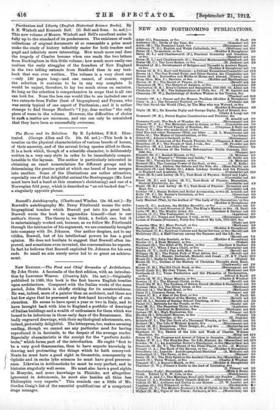Naw Mimi:mi. — The First and Chief Ga'owndes of Architecture. By John
Shute. A facsimile of the first edition, with an introduc- tion by Lawrence Weaver. (Country Life. 15s. net.)—Originally published in 1563, this book is the first known English treatise upon architecture. Compared with the Italian works of the same period, John Shute's is chiefly striking for its amateurishness. He was, indeed, more of a painter than an architect, and there are , but few signs that he_possessed any first-hand knowledge of con- struction. He seems to have spent a, year or two in Italy, and to have brought back with him to England a portfolio of drawings of Italian buildings and a wealth of enthusiasm for them which was bound to be infectious in those early days of the Renaissance. His badly engraved drawings, with their mythological adornments, are, indeed, pictorially delightful. The letterpress, too, makes amusing reading, though-we cannot see any particular need for having reproduced:it in, facsimile, to the despair of the average reader. Especially characteristic is the receipt for the "perfects Archi- tects," which forms part of the introduction. He ought "first to be a very good Grammarian, then to have experts knowladg in drawing and protracting the thinge which he bath conceyved. Nexte he must have a good sight in Geometrie, consequently in Opticke and in suche lyke sciences he must have good percever- ,
ante. Likewise in Arithmeticke he must be very perfect, and in
! histories singulerly well Beene. He must also have a good sights in Mnsycke, and some knowlaige in Phisicke, not altogether ignoraunt in .Astronomie, he must also besides all thise ben Philosophic+ very experts." This reminds one a little of Mr. Gordon. Craig's list of the essential qualifications of a competent stage manager.










































 Previous page
Previous page